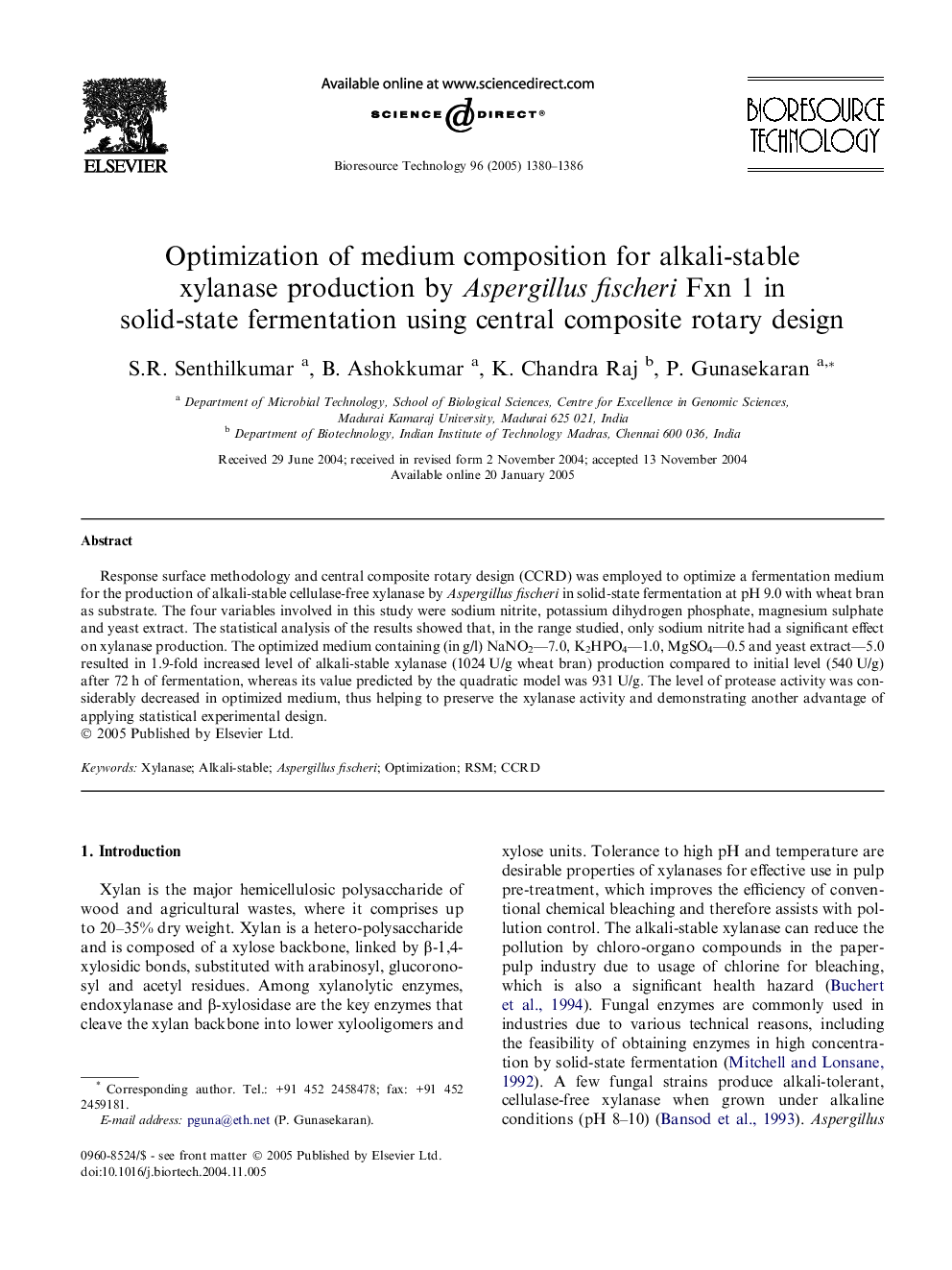| Article ID | Journal | Published Year | Pages | File Type |
|---|---|---|---|---|
| 10396071 | Bioresource Technology | 2005 | 7 Pages |
Abstract
Response surface methodology and central composite rotary design (CCRD) was employed to optimize a fermentation medium for the production of alkali-stable cellulase-free xylanase by Aspergillus fischeri in solid-state fermentation at pH 9.0 with wheat bran as substrate. The four variables involved in this study were sodium nitrite, potassium dihydrogen phosphate, magnesium sulphate and yeast extract. The statistical analysis of the results showed that, in the range studied, only sodium nitrite had a significant effect on xylanase production. The optimized medium containing (in g/l) NaNO2-7.0, K2HPO4-1.0, MgSO4-0.5 and yeast extract-5.0 resulted in 1.9-fold increased level of alkali-stable xylanase (1024Â U/g wheat bran) production compared to initial level (540Â U/g) after 72Â h of fermentation, whereas its value predicted by the quadratic model was 931Â U/g. The level of protease activity was considerably decreased in optimized medium, thus helping to preserve the xylanase activity and demonstrating another advantage of applying statistical experimental design.
Keywords
Related Topics
Physical Sciences and Engineering
Chemical Engineering
Process Chemistry and Technology
Authors
S.R. Senthilkumar, B. Ashokkumar, K. Chandra Raj, P. Gunasekaran,
